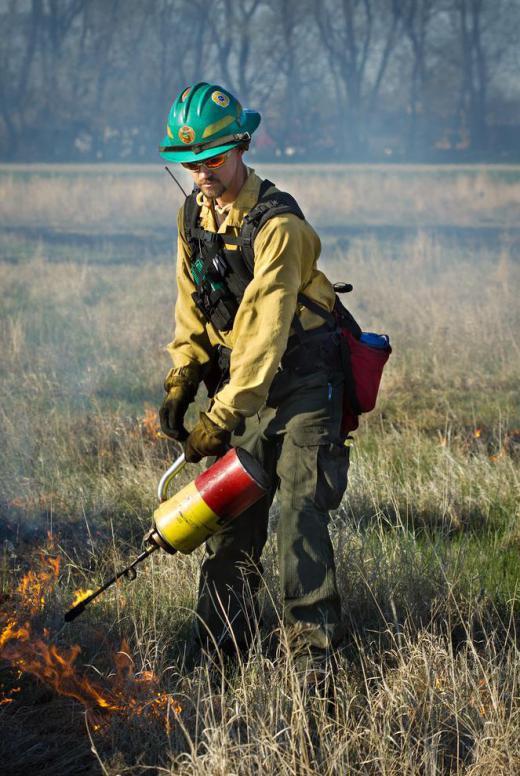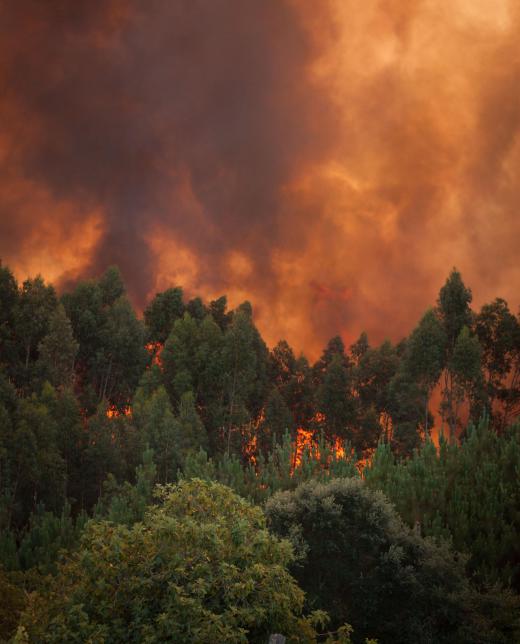A drip torch is a device which is used to set fires for the purpose of conducting controlled burns or establishing firebreaks while fighting fires. These devices are used by professional firefighters and by people such as woodsmen who have received training in how to use a drip torch properly. A drip torch can be very dangerous in the hands of a user who has not received the proper training, and sale of these devices is restricted in some areas for this reason.
The drip torch consists of a reservoir of fuel attached to a nozzle. Fuel is dripped out of the nozzle and past an igniter, allowing flaming drops of fuel to hit the ground. These droplets start a fire in the area where they are deposited. Drip torches are commonly used to create a line of fire, and are much safer than alternatives such as dribbling fuel on the ground and then igniting it.

As one might imagine, there are some safety precautions involved in using a drip torch. The torch itself has a check valve to control the flow of fuel through the igniter, as well as valves and safety features which prevent fire from traveling backward up the nozzle and igniting the tank. Highly stable fuels such as kerosene are often used to reduce the risk of unwanted ignition, and the drip torch is insulated to prevent the contents from getting too hot.

While using a drip torch, it is necessary to wear full protective gear, including fire-resistant clothing, face protection, heavy safety gloves, and sturdy boots. Use of torches is also coordinated to ensure that the location of everyone on scene is known, and to confirm that everyone is coordinating their activities. Situations such as trapping someone inside a fire are highly undesirable, and are avoided with elaborate safety protocols.
Training in the use of a drip torch is usually provided at schools where people learn to fight wildfires. Members of urban firefighting organizations may also become familiar with these devices, as do rural firefighters. Forestry schools also teach students about how to use drip torches as part of forestry management, as these torches can be used to ignite brush piles and for controlled burns conducted for various reasons. Such devices are usually used in a group, with members of the group looking out for the safety of others and intervening if a problem develops.
Ever since she began contributing to the site several years ago, Mary has embraced the exciting challenge of being a About Mechanics researcher and writer. Mary has a liberal arts degree from Goddard College and spends her free time reading, cooking, and exploring the great outdoors.

